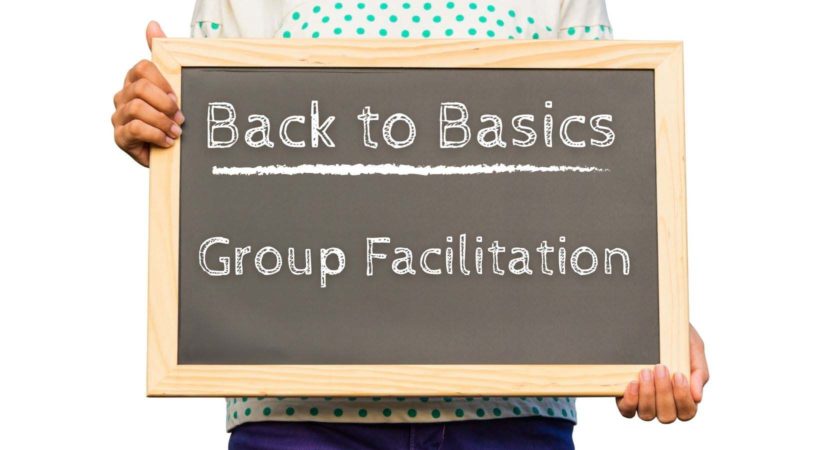
Back to Basics: Group Facilitation
Welcome to our Back to Basics series! In this series we explore some of the foundational methods, practices and terminology for teaching reading and writing. This series is for those new to the field of literacy, beginning tutors or those who would just like a refresher. This week we discuss group facilitation.
Group facilitation is an important skill in the adult education field. Facilitation can be used for training tutors, planning programming or teaching in a small group setting rather than one-on-one. An instructor generally lectures and teaches prescribed content. In contrast, a facilitator is more like a guide for learning and a group leader. Each member of the group is encouraged to contribute and share information using their prior knowledge. Watch the video below for a clear explanation of the differences between an instructor and a facilitator.
“The facilitator might also be called the group leader. When the small group is first established, the facilitator might have more of a leadership role but as the group grows and the individual members gain in confidence in skills, leadership is increasingly assumed by the group.” – Community Literacy of Ontario
What makes an effective facilitator?
The NWT Literacy Council outlined a number of skills and the knowledge needed for an effective facilitator:
- well prepared
- thinks and acts creatively
- listens and observes
- uses visual aids effectively (slides, flipcharts, etc.)
- records ideas neatly
- asks probing questions
- thinks quickly
- acknowledges and responds to participants
- summarizes
- resolves conflict
- uses humour
- knows a variety of techniques for group discussions, including problem-solving and decision-making
- designs or chooses appropriate group discussion techniques
- understands people and groups, and energizes the group
What makes an effective group?
Effective facilitation also encompasses what makes for an effective group. Some aspects of effective groups are:
- small in size – ranging from 5 to 15 learners
- learner centered – adapt the curriculum to the needs and interests of learners
- experiential – incorporate learners’ experiences, skills and ideas in the teaching
- cooperative – learners commonly help each other and work together
- participatory – learners have a say in what is taught and how it is taught, rather than being passive recipients
To learn more about being an effective group facilitator, check out the resources listed below.
Resources
- Am I Talking When Students Could Be Talking (or Thinking, Brainstorming, Reading or Writing)?
- Assigning Roles During Small Group Work
- Creating Learning Partners: A Facilitator’s Guide for Training Effective Adult Literacy Tutors
- Design to engage : how to create and facilitate a great learning experience for any group
- Facilitation Skills Guide
- Library Materials by Topic – Facilitation Skills
- Small Talk: A Resource Guide for Small Groups
Related Blog Posts
Using The Westcoast Reader as a Digital Resource
Did you know that The Westcoast Reader is now available as a digital newspaper? This format is great for tutors and other practitioners working remotely. Earlier this year Felisha Chuter …
The Persistence of Learning Styles
Why do we keep teaching learning styles if they’ve been debunked? Let’s take a look at why the theory still persists.
Back to Basics: Post-Reading
Engaging with a text doesn’t end when reading is finished. Learn the importance of post-reading strategies.
